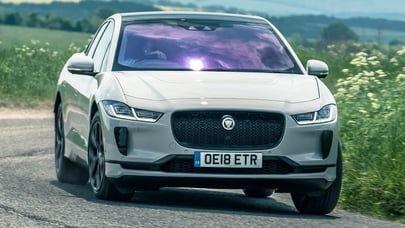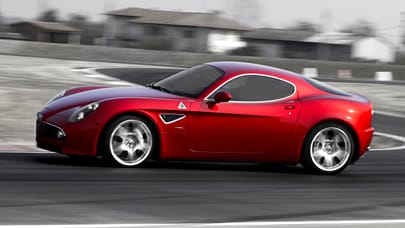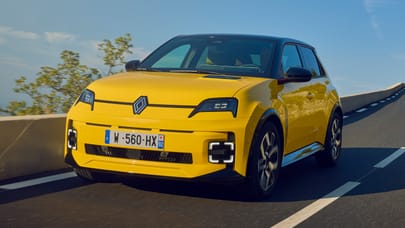
Top Gear’s top 15 fun and frugal cars
It’s not rocket surgery – just the most fun for the least amount of fuel

Mazda MX-5

If there were ever a book called Big Fun for Little Money, featuring all sorts of cheap entertainment like BYOB house parties, water pistol fights and thrift-store treasure hunts, the Mazda MX-5 would probably be the sole automotive entry.
It’s cheap to buy – particularly second-hand – with unrelenting reliability and frugal fuel economy. But beyond that, it’s a fun car, regardless of how you derive it. If you just like to cruise, lovely. Want to enjoy the sensations of driving? Go right ahead. Want to go all-out and breach the limits of civility and traction? Easy: the front engine, rear-drive setup is made for such tomfoolery.
Don’t want an MX-5? Well, the Honda S2000, Toyota GT86 and Subaru BRZ still exist...
Advertisement - Page continues belowRenaultsport Clio 182

Hard as it might be to admit, the Clio suffers in comparison to the MX-5, GT86, S2000 and their ilk. Chiefly because those sports cars were made purely for driving enjoyment, while the Clio 182 started its life as a regular Clio. A simple city car, made for shopping runs, pensioners and learner drivers.
And of course, this means the 182 will never be as responsive and alive, as entertaining to drive, or as much of a tail-out lunatic as a rear-drive sports car, right? Wrong. The little Clio capitalises on every upgrade in a way that shames anything bigger and ostensibly better.
Volkswagen Golf GTI MkV

So, we’ve not exactly broken new ground in saying that little runabouts can be tooled up into properly entertaining driver’s cars. That whole ‘hot hatch’ thing has been around for a bit now, after all.
But just take a minute to think about what the hot hatch has become over the past decade. Hundreds of horsepower, zero to 60 sprints in the four-second range, puckering price tags and cross-country abilities to shame an ICBM. Ruthlessly capable things, sure, but a branch of the hot hatch tree that we’re less inclined to hang our swing from.
For us, hot hatch perfection exists much closer to its roots – simple, practical, and with the ability to fit in any parking space as easily as any social situation. And, crucially, designed to extract the biggest fun at the smallest speeds.
The MkV GTI is more than an enduring example of this hot hatch how-to list; it’s real-world proof of the ingredients and recipe. Yes, you can alter it to taste, but the basic recipe still delivers the best results. And miles per gallon, now that we think of it.
Advertisement - Page continues belowCitroen Mehari

How you balance fun and frugality depends on how you derive the former and define the latter. Will a Mehari be entertaining to throw through corners, balancing on the absolute limits of traction and bravery? Actually, we’re not sure – that’s one of many amusingly dumb things we’ve not attempted. Yet.
It’s broadly irrelevant in any case, because driving a Mehari at any speed is an event. It’s a conspicuous companion at every moment, an antithesis to the quiet-butler mannerisms of anything more modern or mainstream. As something to experience, an open-top (and side), mostly plastic, somehow off-roadable Citroen that weighs just 535kg is going to be memorable, regardless of where you might roam. And frugal? Well, regardless of how you define it, a 600cc twin is likely going to clear that hurdle.
Mini

Let’s say you absolutely insisted on defining what frugal means. OK, weird kink, but this is the internet after all. And as much as we can dance around definitions, to be frugal almost always means you’re being thrifty, economical, self-disciplined, sensible or canny. Or all of the above.
And that defines the original Mini to a T, doesn’t it? A thorough reevaluation of the car itself – its size, shape, layout and mechanicals – in order to get more automobile from less material than anyone thought was possible. See also: Fiat 500.
By now, the Mini’s story is embedded in car-person canon. While practicality and parsimony defined its proportions, they also served another purpose: as a perfect platform for pure enjoyment.
Porsche Taycan

Yes, the Taycan. It is uproariously good fun, after all, and running it costs pennies on the dollar compared to anything petrol-powered. But it’s here as much for its ability as it is to make a point. Sorry, Porsche.
We could game the entire system and keep recommending electric cars that, even with the incredible price of electricity these days, still win any cost-per-mile equation. But we’re not going to do that. Plus you won't see the Porsche for less than £70,000.
Ariel Nomad

Motorways are not the Ariel Nomad's happy place and rainy commutes will not be yours. Ideas of using the Nomad for regular school runs and shopping trips exist only in the minds of the most committed mental gymnasts. And yet, we can think of little better for this list than the climbing frame on wheels.
The Nomad exists solely for entertainment and for our money the base-model answers the ‘Big Fun for Small Fuel Bills’ question better than any other – the naturally aspirated Honda 2.4-litre four-cylinder might earn fame for its reliability, but should probably earn a nod for its fuel economy, too. In a four-door Accord, it’s doing 40mpg on the highway. In something that weighs 670kg, it might just be the most frugal plaything this side of a go-kart.
Advertisement - Page continues belowBMW i8

OK, so it’s hardly the cheapest thing in the world to buy. But this is actually in the i8’s favour in a couple of ways. Firstly, if you do the sums on running costs versus purchasing costs, a second-hand i8 looks better with every petrol pump price jump. And secondly, even if you are well-off enough to be considering higher-tier and higher-priced cars, why should that fortunate position immediately sentence you to exorbitant running costs?
The i8’s numbers alone make you feel like you’re getting away with something you shouldn’t. It has 370bhp and does 0-60mph in the four-second range, yet also manages 45mpg without any special effort on the driver’s part. It’s a proper two-door supercar with a cornucopia of carbon fibre, but it can also switch to EV mode and creep through town in the dead of night without disturbing a soul.
And even though it packs a petrol engine, electric motor and battery pack under its overt flanks, it still only weighs 1,535kg in coupe form and 1,600kg for the gorgeous roadster. A lightweight by modern standards.
Caterham... anything, really

Polar opposites. It’s the basis of any good buddy comedy, and about 300 bad ones. It also rather handily describes the BMW i8 and roughly anything in Caterham’s line-up.
As Caterham continues to build various iterations of the old Lotus Seven, it also continues to follow the now-famous maxim of the Seven’s creator: simplifying and adding lightness. Of course, BMW’s ‘start light and add complexity’ regime yielded uncannily good results with the i8, and it does our withered hearts good to see a company swallow brave pills like they were Pez and truly go for it. But there’s a reason Caterham will continue long after the i8’s demise.
When every layer of complexity risks insulating the driver from the experience of driving, Caterham solves the problem by avoiding it entirely. Build it small, build it light and include only what’s truly necessary to have a good time. Turns out that truly good ideas don’t go out of date.
Advertisement - Page continues belowAlpine A110

Where does the A110 fit into the picture, you might be thinking. Well, try to imagine a perfect synthesis of lightness, simplicity, technology and complexity. Where did you land? A modern hot hatch? A modern Lotus? Nope, you thought of the Alpine.
New-tech turbos and twin-clutch gearboxes combine with an old-school disdain for extraneous weight. If the i8 laughs off traditional contradictions, the A110 finds a way to make them work together. It’s a truly unique and special thing. Which goes quite some way to explaining why it’s not selling better.
Toyota MR2

If you're after something fun and frugal, we’d wager that it's partly down to cost. Not casting aspersions or anything, but we’ve found that those with quite a bit of money tend not to give much thought to how much fuel they’re using.
If money is a concern for you... well, a) welcome to an exceptionally large club, and b) it stands to reason that you’ll want a car that’s cheap to buy as well as cheap to run. And the final generation of MR2 stands alone as the perfect nexus of cheap, mid-engined and fun. Not easy to achieve, but easy to pick up for peanuts – at least in the UK.
Citroen DS

We’ll admit that a gigantic limousine from the 1950s is perhaps not the first car you’d think of when it comes to fuel frugality. But the DS, as much by default as by design, manages to be the rarest of contradictions. Ancient, massive and characterful, yet also abstemious, especially in the later fuel-injected models.
Its small engine was a shining example of both ‘great is the enemy of good’ and ‘good grief, that deadline is close’. The DS was meant to have a flat-six, yet time and money constraints meant it used – and kept using – a weedy four-cylinder. Combined with its decently aerodynamic shape, old-school narrow tyres and relaxed nature, it’s possible to extract as much as 30mpg from the 70-year-old saloon.
Hyundai i20N

If you’re an i20N driver, you might be wondering how a car we’re touting as frugal manages to empty its tank so quickly. Helpfully that’s a question we’re actually qualified to answer...
The answer is both simple and twofold. Firstly, the tank is so comically tiny, you’ll be the only person at the petrol station who doesn’t need to take out a new mortgage to brim their tank. Secondly – and perhaps more importantly – it’s entertaining enough to forget how much this kind of fun costs these days.
But even with the spirited driving that we indulged in on our road test, the i20N still managed 40mpg. It’s an impossibly frugal, and nigh-on ineffably fun machine.
Lotus Elise

After years of practice and experience, humanity has pretty much figured out how to get good fuel economy. Light weight, slippery bodywork and small engines are pretty much the ABC of getting from A to B without too many Fs at the petrol pump. And the Elise couldn’t nail this formula any better, so of course it earns its place here.
But, as you may have been able to discern already, the Elise is a sports car. So what happens when you start driving in the manner a car like this practically begs for? Well, if you’ve picked up a Series 1 Elise you’ll likely be hitting somewhere around the 40mpg mark. And, thanks to a mostly waterproof roof, it’s not entirely outside the bounds of reality to consider using one as your only car.
Just about any motorbike

But if we’re going to talk about extracting the most fun from the least fuel, we really are going to have to mention motorcycles.
It’s the logical conclusion of the low-weight-small-engine formula: just about any old bike you can buy will weigh half as much as a Caterham. From there, it’s really a case of where you want to go, how much power you want to take you there, how much weight you’re willing to drag along and what you want to achieve when you arrive.
Take the Ducati Panigale V4 SP2 as an example. It is, broadly speaking, a race bike with number plates; a spine-withering, ego-shrivelling bike with a supercar-smashing power-to-weight ratio and more motorsport gubbins than a season of Drive to Survive. It’s properly pricey for a bike (£35,000 isn’t exactly peanuts), but it’s the merest fraction of the price of a supercar and it’ll do 35mpg without a worry. And that’s about as bad as your average punter can do on purchase price and fuel economy without a) buying something custom, or b) buying a Harley.
Something like the Suzuki SV650, on the other hand, weighs 200kg, has 72bhp, does 68mpg and costs £7,000 brand new. If that doesn’t qualify as frugal in your book, you may have a future among the landed gentry.
But, being the sycophants of lightweighting that we are, we’ll pay more for less. Cue the Husqvarna 701 Enduro. For about £9,500, you get a bike that weighs 150kg, has 74bhp, does 67mpg and has the off-road ability of a steroidal goat. So regardless of what you find fun, it’ll take you where you need to go to find it.
Trending this week
- Car Review
Aston Martin Vanquish Volante
- Car Review
Lamborghini Temerario







